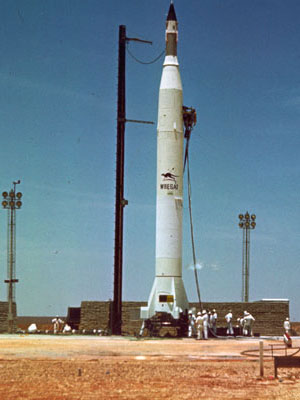WRESAT — Weapons Research Establishment Satellite

In 1967, Australia became the third nation to design and launch a satellite to orbit the earth.
Design work on Australia’s first satellite began in early 1967 as a joint venture between the Weapons Research Establishment (WRE) and the University of Adelaide.
The project aimed to improve the understanding of the effect of the upper atmosphere on climate and weather and assist the US in obtaining physical data for research programs. The project also aimed to develop techniques for launching trials in the European Launcher Development Organisation (ELDO) and British satellite programs, and demonstrate an Australian capability for developing a satellite using advanced technology and existing low-cost launch facilities at Woomera.
The US and the UK provided assistance on the project, including the US Department of Defense, NASA, and the UK’s Ministry of Technology.
Using a spare American Redstone rocket from the tripartite Sparta project conducted at Woomera, WRE satellite (WRESAT) was designed, developed, built and successfully launched in eleven months. It was launched at Woomera on 29 November 1967, making Australia only the third country in the world to build and launch its own satellite, behind Russia and the United States.
WRESAT completed 642 orbits and transmitted scientific information for 73 of these to tracking and research stations around the world. It re-entered the earth’s atmosphere and was destroyed by the resultant high temperature on 10 January 1968 over the Atlantic Ocean west of Ireland.
Apart from the experimental data obtained, WRESAT contributed both to the knowledge of the solar-terrestrial relationship and to the studies of atmospheric composition. The project also presented an opportunity for a united approach to a scientific problem with demanding requirements.
Such was the interest in space technology that the WRESAT prototype was exhibited in Parliament House, Canberra, and at the London Trade Fair in 1968.

